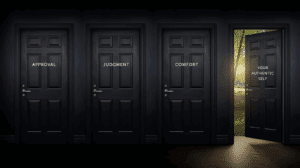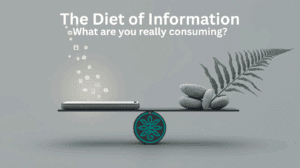You’ve done the work. You’ve identified those limiting beliefs, conditioning patterns, biases and assumptions that have been holding you back. You’ve traced their origins, understood their impact, and intellectually recognized they’re not serving your highest good. Now comes what should be the simple part, right?
Just let them go.
Except it’s not simple at all. It’s agonizing. And there’s a perfectly good reason why.
The Uncomfortable Truth About Your Limiting Beliefs
Here’s what no one tells you about personal transformation: those limiting beliefs you’re trying to shed? They’ve been protecting you all along.
That thought deserves a moment to sink in.
The very beliefs that are now constraining your potential were originally formed as survival mechanisms. They weren’t design flaws in your psychological makeup – they were features.
Your Limiting Beliefs Were Once Your Guardians
That belief that “I must never stand out” didn’t randomly appear in your psyche. Perhaps it developed when you realized that flying under the radar kept you safe from criticism or bullying. Maybe “I must be perfect” emerged when you discovered that exceptional achievement was the only reliable way to receive love or attention.
Your limiting beliefs weren’t villains that invaded your life – they were guardians that your younger self created to navigate a challenging world with the limited resources available at that time.
One client described it perfectly: “I realized I wasn’t trying to disconnect from some toxic thought pattern. I was trying to thank and retire a bodyguard who had been working overtime for twenty years.”
This perspective shift changes everything.
The Framework That Built Your World
Beyond mere protection, these beliefs have been your interpretive framework – the lens through which you’ve experienced and made sense of your life.
“I’m not enough” isn’t just a thought that occasionally pops up during stressful moments. It’s the operating system running in the background of your consciousness, filtering how you perceive relationships, opportunities, and your own capabilities.
These frameworks have determined what you notice and what you overlook, what you pursue and what you avoid, who you trust and who you fear. They’ve shaped your entire reality.
Is it any wonder that letting them go feels like architectural demolition of your identity?
The Vertigo of Disconnect
When you begin disconnecting from a belief that has structured your entire worldview, you’ll likely experience what I call “belief vertigo” – that disorienting sensation when the ground beneath your psychological feet suddenly disappears.
If you’ve spent decades believing “I must take care of everyone else first,” the prospect of prioritizing yourself doesn’t just feel selfish – it feels like stepping off a cliff into an identity void. Who are you if not the caretaker? What is your value if not in sacrifice?
This vertigo isn’t weakness or resistance – it’s a natural response to dismantling the scaffolding that has supported your sense of self.
The Uncomfortable Dance with Freedom
Here’s the paradox that makes the Disconnect phase so challenging: the very beliefs that are now limiting you still feel like they’re protecting you. Your nervous system, wired for survival rather than fulfillment, sends danger signals when you attempt to disconnect.
Freedom, it turns out, can feel profoundly threatening.
I witnessed this with a client who had always believed “conflict means rejection.” This belief protected her from potential abandonment by ensuring she never disagreed with important people in her life. When she began disconnecting from this belief, she experienced intense anxiety – not because the new perspective was wrong, but because her protection mechanism was being disabled.
Her body responded as if she were removing her psychological armor before walking into battle.
The Two-Steps-Forward-One-Step-Back Reality
The disconnect process rarely follows a clean, linear trajectory. Instead, most people experience what I call the “disconnect dance” – periods of liberation interspersed with moments of slipping back into familiar patterns.
This isn’t failure. It’s not weakness. It’s your psyche gradually adjusting to a new reality without its long-trusted protection mechanisms.
Beyond Protection to Possibility
The key to moving through the Disconnect phase isn’t fighting against these natural responses – it’s acknowledging them with compassion while gently but persistently creating space for new possibilities.
It means recognizing that your limiting beliefs were never your enemies. They were allies recruited by a younger version of yourself who had fewer resources and options than you have now.
The question becomes not “How do I destroy this limiting belief?” but “How do I honor the protection this belief once provided while recognizing I’ve outgrown its usefulness?”
This reframing transforms the disconnect process from a battle into a transition – a grateful retirement of beliefs that have served their purpose, making way for new frameworks that can support the life you’re now capable of living.
The disconnect isn’t about rejecting your past or the adaptive strategies that got you here. It’s about consciously choosing what will guide your future.
And that choice, while challenging, is the doorway to authentic freedom.








